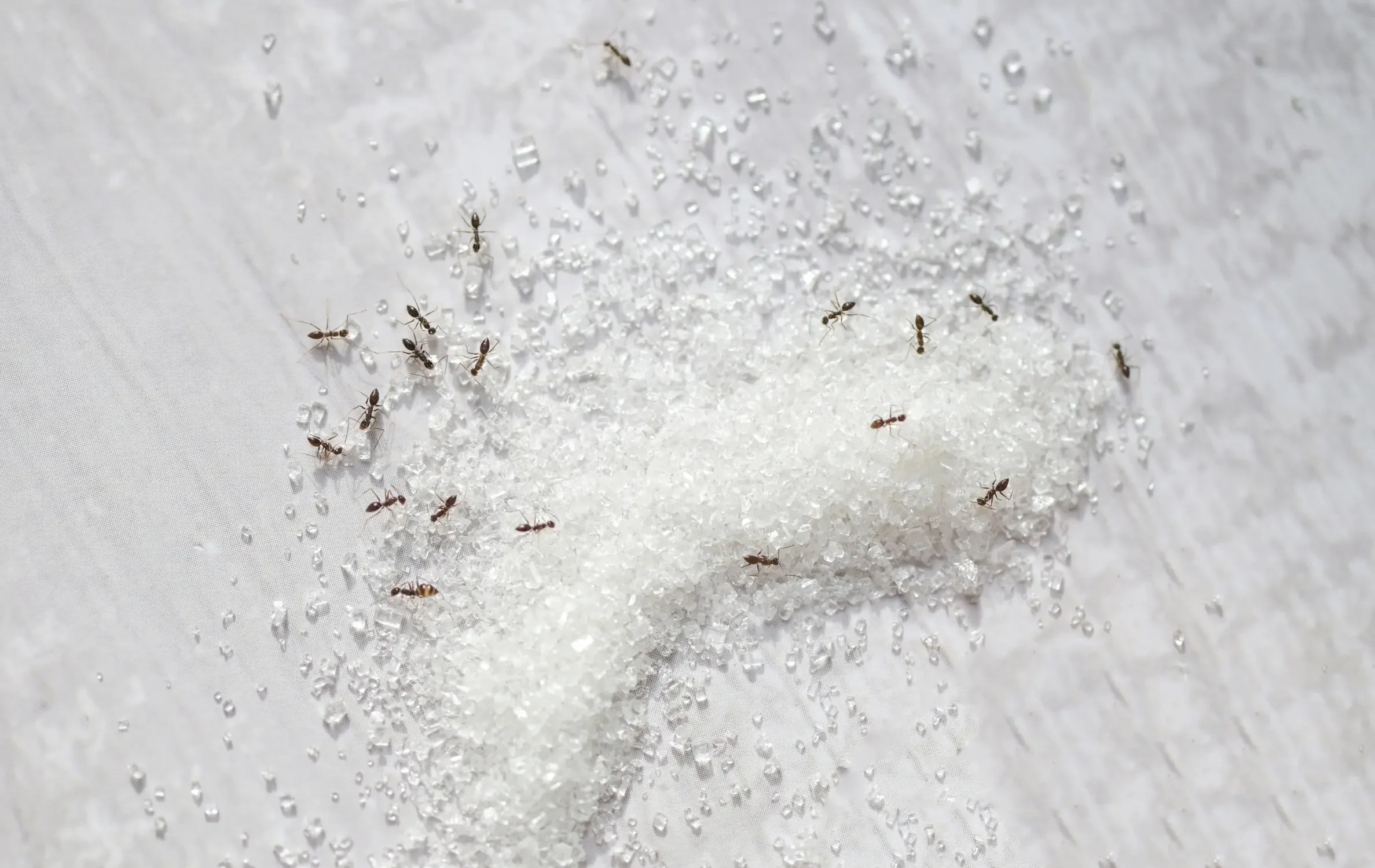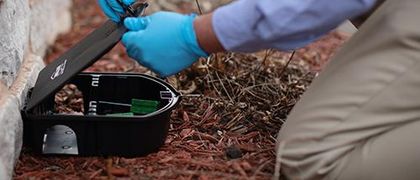A Step-By-Step Guide to Getting Rid of Sugar Ants in Iowa

Welcome to spring in Iowa, where sugar ant infestations are all too common. These tiny ants seem to pop up out of nowhere, especially when the weather warms and food is easy to come by.
The good news? With a little know-how and the right tools, you can get rid of sugar ants and keep them out for good.
Here’s your straightforward, step-by-step guide to ant control—Midwest-style.
Key Takeaways
- In Iowa, odorous house ants and pharaoh ants are the most common culprits mistaken for “sugar ants.”
- Ant trails lead to entry points like cracks, windowsills , crevices and wall voids where ants get inside homes.
- Ant bait with borax works best because ants carry it home killing entire colonies instead of just visible ants.
- Sealing gaps with caulk and calling pest control professionals will stop ants from returning for good.
1. Figure Out What Kind of Ant You’re Dealing With
Not every small ant in your home is a sugar ant. In fact, there’s no true “sugar ant” species in the U.S., but odorous house ants and pharaoh ants are often what people are seeing. These ant species are attracted to sweets, grease, and other food sources. Sometimes, you might even have pavement ants or little black ants sneaking inside.
If you're noticing carpenter ants, that could mean big trouble, since they can cause real damage.
2. Track the Trail and Find the Entry Points
Watch where that trail of ants is headed—likely straight to the pantry or pet food bowl. Ants leave pheromone trails that other worker ants follow. This helps them build their route from ant colonies to food sources.
Follow the ants back and find their entry points—typically cracks in baseboards, windowsills, or the perimeter of your home.
Take note of any crevices or wall voids they might be using.
3. Clean Up and Cut Off the Attractants
You can’t blame ants for being ants—they’re just looking for a snack. But grease, crumbs, and uncovered pet food are like an open invitation. Wipe down your kitchen countertops and floors, and store food properly.
Ants will keep coming as long as there's something to find, so remove their attractants and you'll stop a sugar ant infestation before it starts.
4. Lay Down Ant Bait for Long-Term Results
Sprays might seem like a quick fix, but they only kill what you can see—and that’s just the tip of the ant colonies. For true ant control, use ant bait.
Products use borax or boric acid—substances that ants take back to the nest, eliminating the whole colony over time. It takes a little patience, but it's one of the most effective ways to handle a serious ant infestation.
Don’t forget to place bait near entry points and along their scent trails.
5. Seal Up Gaps and Cracks Around the House
After the ants are gone, it’s time to stop them from coming back. Use caulk to seal crevices, cracks, and gaps around doors, windows, and the perimeter of your home. This step is key for homeowners wanting lasting pest management.
Keep an eye on baseboards, windowsills, and any plumbing or wiring access points. These common ants are masters at finding weak spots.
6. Use Natural Repellents to Keep Ants at Bay
Looking for a DIY boost? Try bay leaves near entry points. Peppermint oil, in particular, has been shown to repel certain types of ants for weeks at a time.
Some homeowners also use diatomaceous earth along the foundation. It’s not an ant killer in the traditional sense, but it can disrupt their movement.
While natural repellents won’t stop a full-on infestation, they can be a good way to deter future invasions.
7. Call in Professional Pest Control if Ants Keep Coming Back
Have you tried everything and still see tiny ants show up? That’s when it’s time to call a local pest control company.
At Miller Pest & Termite, we help homeowners across Des Moines protect their homes with expert ant control and full pest management. Contact us today and let us take care of those ant problems—so you don’t have to.
Get Help Now!







